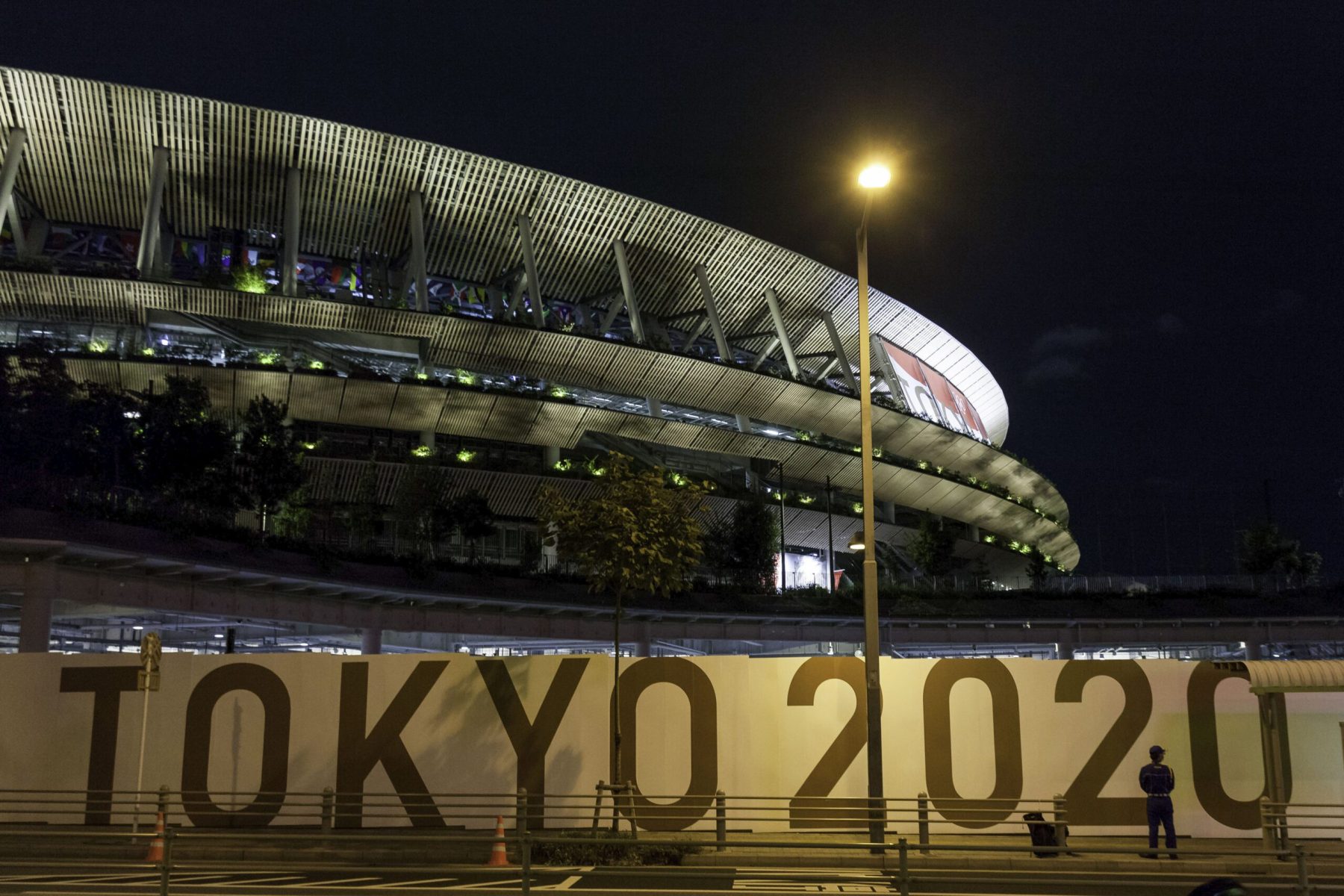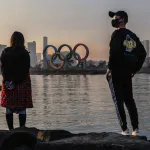There were two alleged incidents of sexual assault at the 2016 Summer Olympics in Rio de Janeiro, one between an athlete and a staff member within the Olympic Village, where athletes, trainers and officials are typically housed during the games. That same year, the International Olympic Committee (IOC) had installed its first safeguarding officer within the Village to help provide support and a direct line of reporting should incidents of sexual violence occur.
By the Winter Olympics in 2018 in PyeongChang, South Korea, the IOC had set up sexual assault resource centers in the Olympic Village. An online course in preventing harassment and abuse was made available online.
Although a history of harassment and assault at the Olympics was not new, the indictment and trial of Larry Nassar — the former USA gymnastics national team doctor — brought the issue of sexual violence at the Olympics to the fore in 2018. The widely-watched sentencing of Nassar occurred less than two weeks before the start of the 2018 games, further heightening the attention on the need to address what this kind of abuse looks like, especially within the immediate world of the Olympic games.
Given this history, it would seem safe to assume that the protocols set forth over the past five years would be continually evaluated and enhanced. With the Olympics set to begin in Tokyo, determining what has been improved upon since the last games seems like it would be easy.
It isn’t.
The IOC’s media relations office denied The 19th’s request for an interview, instead providing the following statement: “The IOC stands together with all athletes to state that harassment and abuse of any kind are contrary to the values of Olympism. Athletes’ safety and wellbeing is a priority for the IOC and is in line with its mission, stated in the Olympic Charter, to ‘promote safe sport and the protection of athletes from all forms of harassment and abuse.’”
The IOC statement noted that as part of its Olympic Agenda 2020 reforms, the IOC Framework for Safeguarding Athletes and Other Participants from Harassment and Abuse in Sport (Games Time Period) was established to detail how incidents of abuse and harassment can be reported during the games, and what’s to take place after a report is filed. This documented framework has existed since at least the 2016 games in Rio de Janeiro, without much obvious amending.
The document also stresses a need for education among particiapting athletes to recognize sexual violence of all kinds. The document specifies that a safeguarding officer “will be present at the Olympic Village throughout the Games Time Period” and will be responsible for documenting all reports of sexual violence, determining whether any follow-up is needed, recommending whether a case needs to be submitted to the IOC or local law enforcement for follow-up, and providing emotional support to “concerned persons” as needed. These protocols appear to be consistent with past years’ reporting frameworks.
When contacted directly for comment and clarification, IOC Safeguarding Officer Susan Geiring would only direct The 19th back to the IOC statement. Nicole Deal, the chief security and athlete safety officer for Team USA, did not respond to The 19th’s request for an interview about the evolution of these protocols and what is being done to help protect the members of Team USA from sexual violence during the games.
The lack of specificity around the protocols and standards for prevention and reporting of sexual violence feel noticeable. Before opening ceremonies even began, a man had been arrested on suspicion of raping a woman at Tokyo’s Olympic Stadium, according to The Japan Times. Both were part-time workers at the stadium. Additionally, a Team USA fencer has been barred from the Olympic Village before the start of the games after facing multiple allegations of sexual assault.
Although the IOC may be less than explicit on what continuing to develop sexual violence prevention programs may look like, others who work in this field have plenty of ideas for how to move forward and how to address this at all levels — even from the earliest ages.
Earlier this year, the American Medical Society for Sports Medicine (AMSSM) released a position statement addressing the widespread problem of sexual violence of all kinds taking place in all levels of sports. Critical to this statement is its focus on training people on the prevalence and various forms of sexual violence in sports. As the professional organization for non-surgical sports medicine physicians, the group seeks to promote the development of clinicians in the field and further the conversation on how these practitioners can best serve their patients. That’s why they are explicit in their commitment to reducing sexual violence in athletics, especially through increased clarification and expansion of current standards for mandatory reporting.
Dr. Kristin Abbott, a sports medicine physician at Northwestern University and the assistant team physician for the school’s athletics program, was one of the co-authors of the AMSSM position statement. She told The 19th that though she personally cannot speak to the environment in the Olympic Village, “sexual violence and sexual harassment is prevalent in sports — and it doesn’t only impact women.”
Abbott noted that depending on the way studies are designed and the groups interviewed for them, anywhere from 2 to 50 percent of athletes have experienced some form of sexual abuse, and up to 90 percent of all athletes say they have experienced some form of sexual harassment. Being an elite athlete is a key risk factor, she said.
“They’re more dependent on coaches, there are higher expectations, there is more stress. When I think about athletes performing at the Olympic-level, that is a group that’s thought to be more at-risk,” she said, adding that during the games, “athletes are away from their typical support systems.”
The “preventive measures” from the framework provided by the IOC to The 19th are limited to a single sentence, which states that “IOC educational materials and other information regarding harassment and abuse in sport will be available to Athletes and other Participants including their respective entourages prior to, during and after the Games Time Period, in particular explaining what may constitute harassment and abuse, and where Athletes and other Participants and their respective entourages may seek further information, advice and support.”
However, Abbott had more specific guidance. She said that “the first pillar of prevention is awareness.”
“Everyone who has any interaction with athletes and is charged with safeguarding athlete welfare needs to be aware that this is highly prevalent and happening and is impacting athletes’ participation and health,” she said.
A big part of that is ensuring that those responsible for athletes and their schedules work to minimize all opportunities for an athlete to ever be isolated or in private. Abbott said that all interactions with athletes, whether with peers, coaches, physicians or anyone else involved in their training or care, needs to be “observable and interruptible.”
As noted in the IOC’s own protocols, reporting is a key element when it comes to addressing sexual violence. Abbott said that to create an environment where athletes feel safe, not only does there need to be a clear policy for reporting in place, but one that is explicit in identifying what resources are available. She explained that in the context of the Olympics and Paralympics, anyone who works with an athlete is required to report any form of sexual violence to Safe Sport, the umbrella organization for abuse prevention and reporting that exists both within the IOC and nationally as the U.S. Center for Safe Sport.
“The athlete needs to feel safe and secure that the person they have reported to will support them, not shame them, and get them the support they need, get them medical care if it is needed, and then go make the report to the right officials so that the perpetrator can’t continue,” she said.
While much of the media attention and kinds of implemented policies around preventing sexual violence in elite athletics focus on the exploitation of athletes by coaches, trainers and others central to an athletes’ career, Abbott also said it’s important to not forget that “peer sexual violence is also common.”
Within team sports, Abbott said that this can often take the form of some kind of hazing activity, but also is often facilitated by social media interactions that happen between peers on a team or delegation.
“Sexual exploitation with phone messages and video sharing are becoming more common between athletes,” Abbott said. “We need to recognize that peer violence is more common because these are the people who you interact with everyday. You interact with your peers outside of practice and outside of training and [sexual violence] does happen.” But, Abbott said, “the reporting is the same. If it’s peer-to-peer, that perpetrator still needs to be reported.”
Inherent in being able to adequately report peer-to-peer sexual violence is also being able to understand the larger cultural context in which so much of this abuse is currently rooted.
“With this generation being born online, there is this push for oversharing,” Claudine Malone, program director for the Beau Biden Foundation and an expert on youth athletics sexual assault prevention, told The 19th. She added that within the context of youth sports alone, 40 percent of all sexual abuse is committed by another child, often one who is older or perceived to be more powerful.
“Oversharing online can push someone to a point where they may not have the same level of readiness in person. Sharing nudes, sexting back and forth — these things happen in sports, but at some point the reality is that they’re in a peer group,” Malone said.
Peer-to-peer sexual violence can also be prevalent within athletics because of the characteristics, often positive ones, that competitive sports breed.
“A lot of athletes are bold, they have leadership qualities, they have influence — and it’s that influence that can be abused if there isn’t a code of conduct,” she said.
Because of this, it is especially important to ensure that those at the Olympic Villages are trained to keep an eye out “not just for full disclosures, but partial disclosures. If we can teach our coaches and assistant coaches and the folks monitoring the villages to look out for indicators of abuse, they can make sure that athletes are instilled with the belief that there are trusted adults they can go to if something is wrong or uncomfortable.”
Looking ahead at the Olympics, Malone pointed out that there’s still lots of progress to be made when it comes to establishing not only effective protocols for reporting sexual violence, but for creating a culture where people feel safely able and supported to make these reports.
“The average age of disclosure of sexual abuse is 52,” said Malone, stressing how far we stand to go until people feel able to report abuse when it happens to them. “We are clearly not doing a good job of making sure that survivors feel comfortable and confident that they will get the response and support that they are deserving of.”






